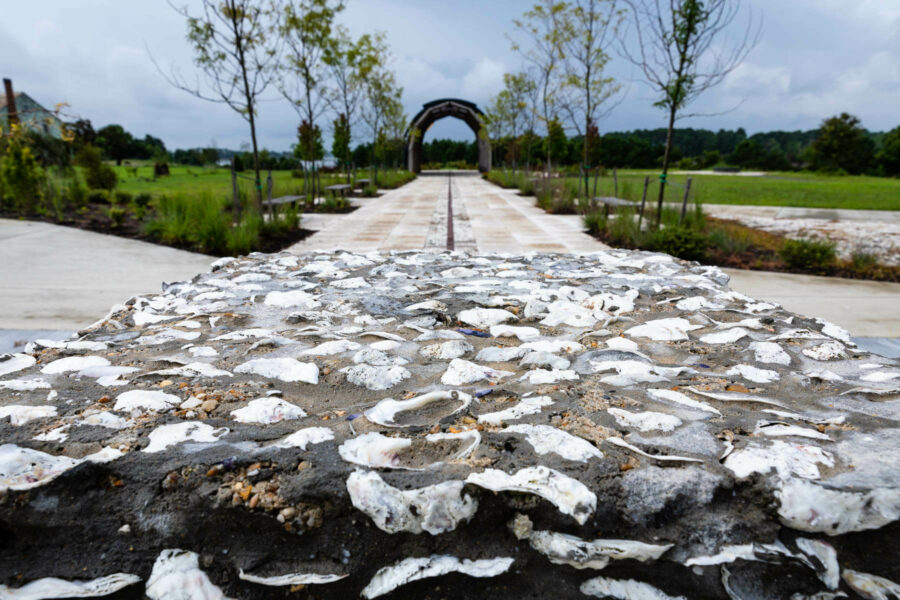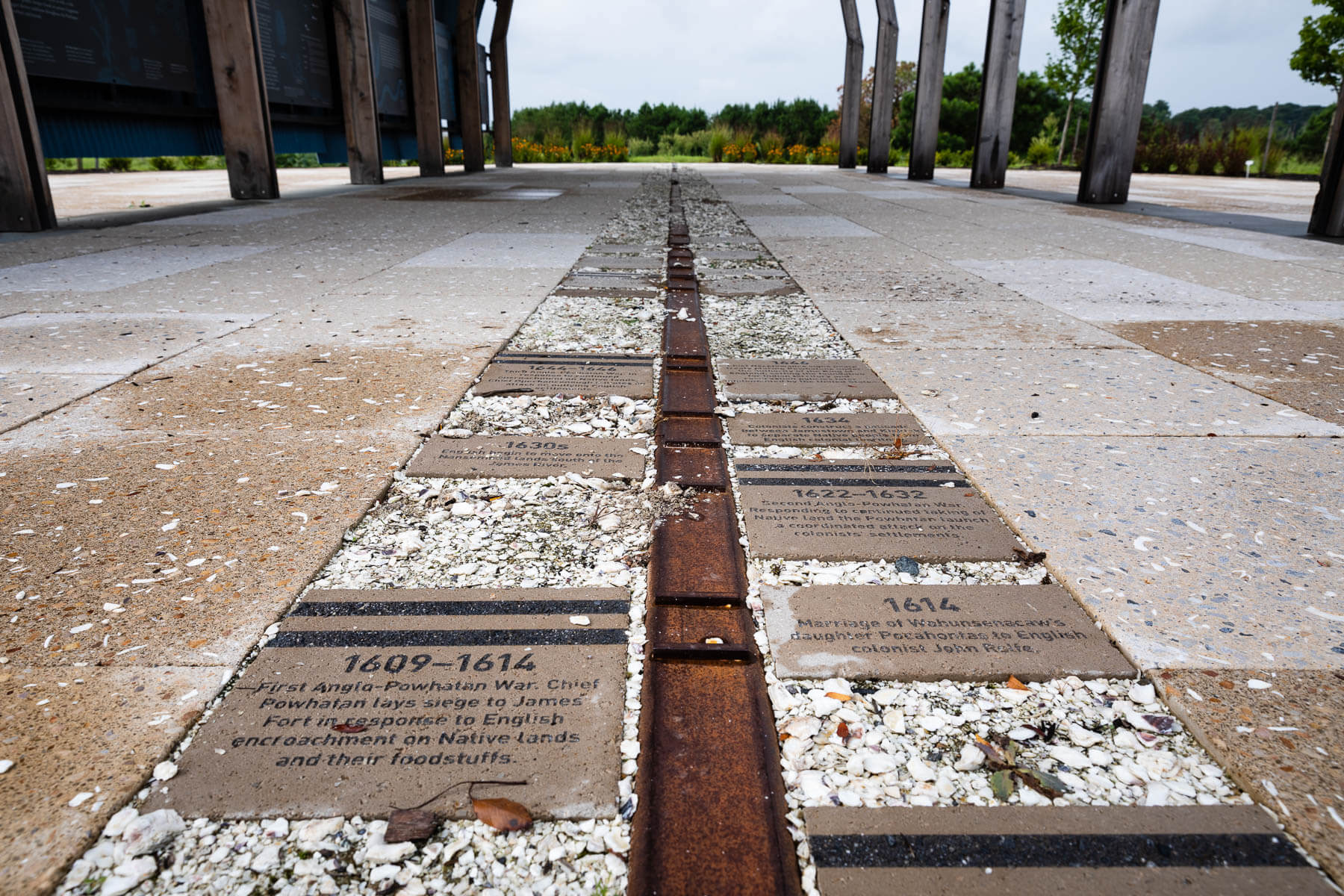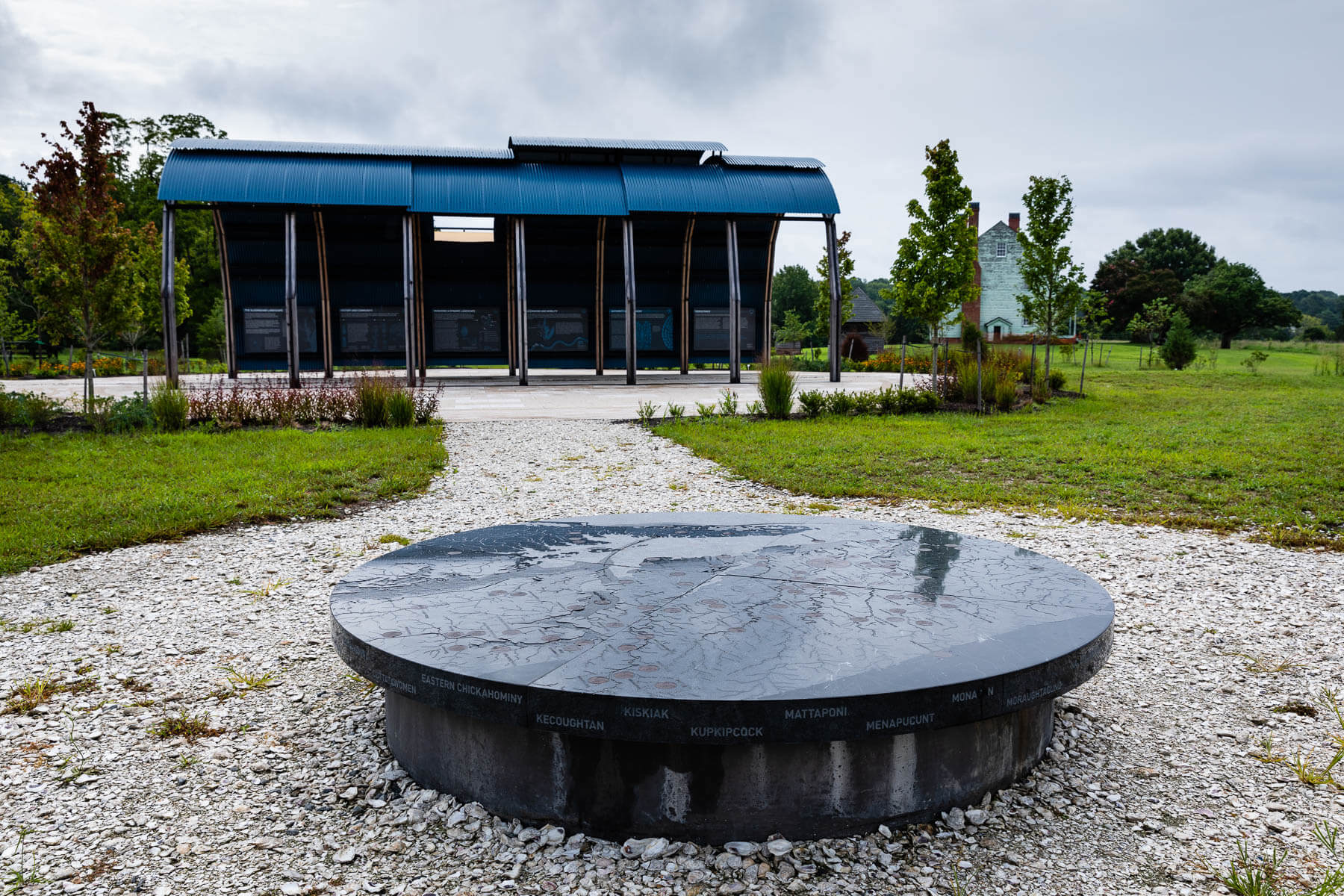The story of Indigenous tribes comes to life at Machicomoco State Park

You can visit Eastern Virginia’s Machicomoco State Park to hike, paddle, boat, camp or simply enjoy views of the York River. But for those who stop to enjoy the site’s historical materials or lend an observant eye to the cultural Easter eggs scattered throughout the property, you will be rewarded with a rich and vital story about the region’s early inhabitants.
According to the Virginia Department of Conservation and Recreation, Machicomoco State Park is the first state park in the Commonwealth dedicated to Virginia’s native tribes. Named after the Algonquin word for “a special meeting place,” the park resides within the Virginia tidewater territory that the Powhatans referred to as Tsenacommacah. It was likely associated with the extensive Powhatan Chiefdom, a political alliance of Algonquian-speaking Virginia Indians that occupied the area. Ten miles up river from the park is Werowocomoco, the significant Powhatan site where Captain John Smith first met Pocahontas.
Machicomoco’s foray into this story is a column of oyster shells stationed at the park’s entrance. The column is inspired by an oyster shell midden—an ancient refuse pile of discarded shells—which was discovered in the park. Subtle yet meaningful, the structure sets a tone for the park, which at every turn invites visitors to reflect on Indigenous peoples’ relationship with the land.

Extending from the oyster midden is a metal strip embedded into the pavement like a train track. Follow this trail and you will walk through thousands of years of timeline markers—starting at the last Ice Age that formed the Chesapeake Bay and surrounding regions and then running through centuries of major events the shaped the lives of those living along the York River. The metal strip continues into the grass beyond the pavement, well past the timeline marker of the park’s official opening, to symbolize the future.
Around the 15,000 AD mark, the timeline passes under another main attraction: an open-air pavilion constructed to resemble a traditional longhouse; made of wood from black locust trees just as they were in the 17th and 18th centuries. Inside the longhouse, panels chronicle the life and culture of the Algonquin people. Nearby, a striking stone map reveals over 50 tribes found within a 50-mile radius of the park, encompassing most of the Chesapeake Bay.
Throughout the rest of the 645-acre park, visitors are rewarded with hiking trails, campgrounds, three overnight yurts and boat ramps that offer access to the York River and Timberneck Creek. Walk along the trails and you’ll find diverse wildlife habitats, from open fields to woodlands and wetland areas. You may spot deer, turkey, native plants and many species of songbirds and birds of prey.

During your adventure, keep an eye out for various subtle details pertaining to the park’s early inhabitants. Burned into wood posts are symbols accompanied by the Algonquin name and English translation for things like oyster, boat and moon. On a shoreline boardwalk, the Algonquin words face the water while the English words face the land, symbolizing how Indigenous tribes traveled along the water compared to the Europeans who preferred traveling on land.
This trail of anthropological breadcrumbs function less like obvious educational signs and more like clues to be gathered. Similar to the replica oyster midden at the park’s entrance, the markings fit so naturally into the grounds that they are easy to miss. Though once you learn about their significance, they are hard to forget.
In an opening ceremony for the park, Chief of the Chickahominy Tribe, Stephen R. Adkins, spoke of how for centuries Indigenous history and culture was sidelined, while the dominant culture’s story was repeated again and again. But according to Adkins, Machicomoco is a step toward illuminating the untold narrative of Indigenous peoples.
“Never has the Commonwealth in its history designated a site so replete with Indigenous history as Machicomoco,” Adkins said. “This offers us a foothold to ensure that our story continues to be told.”

Comments
My family are originally from Accomac County VA. Trying find out more information on the Black Indians that populate the area. The Snead and Stratton families. I would like to definitely visit this park.Thank you for the article.
We went there a little while after it opened. It is a well thought out park and very informative. We live across from it on Timberneck Creek.
Thank you!
Your comment has been received. Before it can be published, the comment will be reviewed by our team to ensure it adheres with our rules of engagement.
Back to recent stories